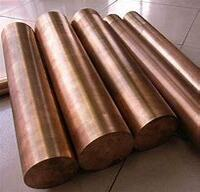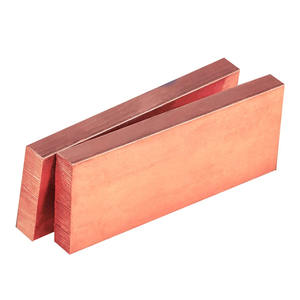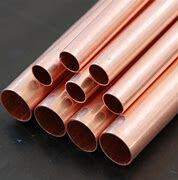1. Introduction
Just 24 hours ago, the London Metal Exchange reported a 3.2% spike in copper prices—pushing the cost of copper rod and related products upward across global markets. This surge, driven by supply chain bottlenecks and rising demand in renewable energy infrastructure, has contractors, electricians, and recyclers reevaluating which copper rod types offer the best balance of performance and value. Whether you’re installing an earthing system, welding copper components, or stripping wire for scrap, understanding the nuances between copper rod varieties is essential.

In this deep dive, we’ll break down the key categories of copper rod—from solid copper earth rods to copper-bonded and copper-clad alternatives—and compare their real-world applications, durability, and cost-effectiveness. We’ll also clarify common confusions around terms like ‘rod copper’ versus ‘copper round bar’ and explore how copper strip options fit into the broader ecosystem.
2. Copper Rod for Earthing: Solid vs. Bonded vs. Clad
When it comes to grounding systems, the choice between a pure copper earth rod, copper bonded earthing rod, and copper clad steel ground rod can significantly impact longevity and conductivity.
Solid copper earth rods (often called earthing rod copper or ground rod copper) offer the highest corrosion resistance and electrical conductivity. They’re ideal for highly corrosive soils or critical infrastructure like data centers. However, they come at a premium—copper rod price for solid variants can be 2–3 times higher than alternatives.
- Copper bonded earthing rod: Made by molecularly bonding a thick layer of copper (typically 0.25mm+) onto a steel core, these rods combine steel’s tensile strength with copper’s conductivity. They’re cost-effective and widely used in residential and commercial grounding.
- Copper clad steel earth rod: Features a thinner copper layer (often electroplated), making it less durable in aggressive soils but still suitable for short-term or low-budget projects. Also known as copper clad ground rod or copper clad earth rod.
For most applications, copper bonded steel strikes the best balance—offering strong performance at a fraction of the cost of solid copper. Check earthing rod price listings to compare: solid copper rods may cost $80–$120 per 8ft unit, while bonded versions range from $30–$50.
3. Copper Rod for Welding and Brazing: Matching Material to Method

Not all copper rods are created equal when it comes to joining metals. The terms copper welding rod, copper brazing rod, and copper to copper welding rod refer to distinct products designed for specific thermal processes.
Copper to copper brazing rods are typically phosphorus-copper alloys that flow at lower temperatures than pure copper, making them ideal for HVAC and plumbing work—especially with aircon copper pipe systems. These rods don’t require flux when joining copper to copper, simplifying the process.
In contrast, copper rod for welding (or welding rod copper) often contains deoxidizers like silicon or manganese to prevent porosity during arc or TIG welding. Pure copper welding is rare; instead, alloys like CuSi3 or CuAl8 are used for better weld integrity.
Key tip: Never use a standard steel welding rod on copper—it won’t bond properly. Always select a copper-specific filler like copper to copper welding rod for reliable joints in copper pipework or bus bars.
4. Copper Strip vs. Rod: When Flat Beats Round
While copper rod dominates in grounding and structural roles, copper strip (also called copper stip, flat copper strip, or copper metal strips) excels in electrical distribution and EMI shielding.
Common variants include 1mm copper strip, beryllium copper strip (for springs and connectors), and nickel plated copper strip (for corrosion resistance). The copper earth strip 25x3mm price is a frequent benchmark in substation grounding grids.

Recyclers often ask: ‘Is stripping copper wire worth it?’ Absolutely—if you use the best way to strip copper wire (mechanical strippers, not burning, which is illegal and toxic). Stripping wire for scrap yields clean copper strip or strands that fetch higher prices. Avoid burning copper wire for scrap—it releases dioxins and devalues the metal.
For DIYers, copper strip near me searches often lead to hardware stores selling roll of copper strip for roofing (copper roof strip) or snail barriers (copper tape for snails). Industrial buyers seek copper strip roll in alloys like copper beryllium strip for precision components.
5. Copper Round Bar and Bus Bars: The Structural Siblings
Don’t confuse copper rod with copper round bar—though both are cylindrical, round bar copper is typically larger in diameter and used in machining, while copper rod refers to smaller diameters for electrical or welding use.
Copper bus bar and flexible copper bus bar are flat or shaped conductors used in switchgear and battery systems. Made from high-conductivity copper bar or copper flat bar, they handle high currents with minimal loss. Cu bars and copper bars for sale come in standard sizes like 1/2” or 1” thickness.
Note: Copper ingot price influences all downstream products. As of this week, 1oz copper price hovers near $0.32, affecting everything from copper tube price to copper rod welding consumables.
6. Conclusion
Choosing the right copper product—whether it’s a copper bonded ground rod for earthing, a copper brazing rod for HVAC repairs, or thin copper strips for electronics—depends on your specific needs for conductivity, strength, corrosion resistance, and budget. With copper prices volatile and environmental regulations tightening, informed selection isn’t just smart—it’s essential. Always verify material specs, avoid shortcuts like burning insulation, and prioritize certified copper bonded or solid copper where performance matters most.
Our Website founded on October 17, 2012, is a high-tech enterprise committed to the research and development, production, processing, sales and technical services of ceramic relative materials such as What’s. Our products includes but not limited to Boron Carbide Ceramic Products, Boron Nitride Ceramic Products, Silicon Carbide Ceramic Products, Silicon Nitride Ceramic Products, Zirconium Dioxide Ceramic Products, etc. If you are interested, please feel free to contact us.

